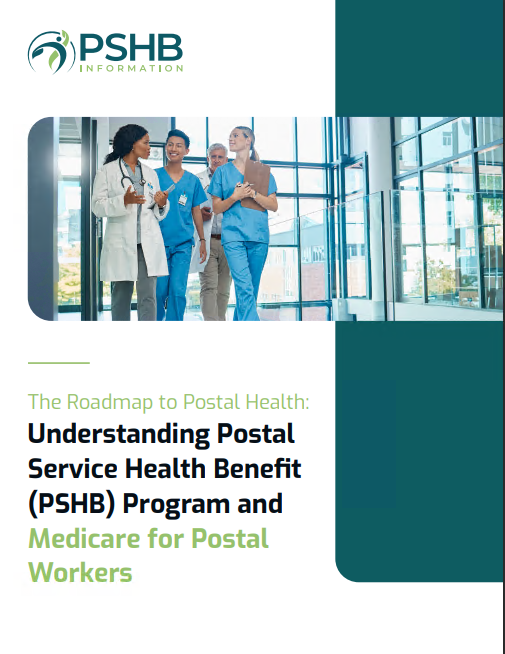Key Takeaways
- The PSHB Open Season is the window for postal workers to review and select their 2025 health plan.
- Understand how PSHB integrates with Medicare and what it means for you before making your choice.
The Countdown to PSHB Enrollment Is Here
Starting November 11, 2024, the much-anticipated Open Season for the Postal Service Health Benefits (PSHB) program is officially underway. This enrollment period runs until December 9, 2024, providing postal workers, annuitants, and their families the chance to assess their health coverage needs and make decisions that will impact their well-being throughout 2025. With PSHB replacing the previous Federal Employees Health Benefits (FEHB) coverage, it’s crucial that you go into this Open Season armed with the knowledge to make informed choices. Let’s dive into what you should know before making your PSHB selection.
Why This Open Season Is Different
PSHB represents a major shift for postal employees and annuitants. Unlike the FEHB system that many are familiar with, PSHB is tailor-made to meet the specific needs of postal workers and their families. With automatic enrollment set for current FEHB members into a corresponding PSHB plan, it’s tempting to sit back and let the transition happen without further review. But that would be a mistake.
Key Dates to Remember
- Open Season Start Date: November 11, 2024
- Open Season End Date: December 9, 2024
- Coverage Launch Date: January 1, 2025
Mark these dates in your calendar. Open Season is your only window to make changes or ensure you’re comfortable with the coverage you’re defaulted into. Once December 9 passes, you may be locked into your choice until the next enrollment period, barring qualifying life events.
Breaking Down the PSHB Enrollment Process
Automatic Enrollment—What Does It Mean for You?
If you’re currently enrolled in an FEHB plan, you’ll be automatically rolled into a corresponding PSHB plan when coverage begins on January 1, 2025. This automatic process helps smooth the transition but comes with a caveat: the plan you’re placed in might not be the best fit for your current needs. Taking the time to review your options during Open Season ensures that you aren’t caught off guard by unexpected changes in coverage or benefits.
Reviewing Your Options Is Key
During Open Season, review your plan’s details carefully:
- Network Coverage: Ensure that your current healthcare providers remain in-network.
- Benefits Structure: Look for differences in covered services, co-pays, and out-of-pocket expenses.
- Prescription Drug Coverage: Check if your necessary medications are still covered or if there have been changes to the formulary.
Remember, plans can vary significantly in their benefits, even under the PSHB umbrella. An hour spent comparing plans could save you from months of frustration or unexpected expenses.
PSHB and Medicare Integration
Do You Need to Enroll in Medicare Part B?
A significant change with the PSHB program involves its coordination with Medicare. If you or a covered family member are Medicare-eligible, understanding how these benefits work together is vital. In most cases, enrolling in Medicare Part B is a requirement to maintain full PSHB coverage. However, there are exceptions for annuitants who retired before January 1, 2025, and are not already enrolled in Part B.
The Advantages of Coordination
Enrolling in Medicare Part B allows you to pair it with your PSHB coverage for more comprehensive healthcare. Medicare typically becomes the primary payer, and PSHB picks up the remaining costs, leading to reduced out-of-pocket expenses. Although there is an extra premium associated with Medicare Part B, the potential savings in co-pays and deductibles often offset the cost for many.
Top Tips for a Smooth PSHB Transition
1. Compare Plan Details Before Deciding
Take advantage of online comparison tools and plan summaries available through the U.S. Office of Personnel Management’s PSHB page. Compare each plan’s details, focusing on:
- Specialty care and preventive services
- Emergency and urgent care
- Deductibles and maximum out-of-pocket limits
2. Consider Your Family’s Needs
If your spouse or dependents are included in your plan, take their health requirements into account as well. Are there specialists or specific treatments they rely on? Make sure the new plan meets their needs without unexpected limitations.
3. Stay Updated with Plan Communications
Plans under PSHB may send updates and notifications during Open Season. Keep an eye out for emails, mailings, or alerts through your online health benefits account. These updates might provide critical information that could influence your decision.
Navigating Potential Changes
Understanding Changes in Costs
It’s natural to wonder how the new PSHB plans might affect your budget. While specific costs of private plans can’t be discussed, it’s worth noting that premiums and out-of-pocket expenses could change compared to your previous FEHB plan. Be prepared for adjustments in:
- Annual deductibles
- Co-pays for office visits and prescriptions
- Specialist visit fees
What If You Don’t Enroll During Open Season?
Failing to make an active choice during Open Season will result in automatic enrollment in a corresponding plan. While this safety net ensures continuous coverage, it may not align perfectly with your preferences or financial situation. Missing this chance to evaluate your options could mean settling for a plan that doesn’t best fit your healthcare needs.
Special Enrollment Periods (SEPs)
Life is full of surprises, and sometimes they happen outside of Open Season. Qualifying life events, such as moving or changes in family status, might trigger a Special Enrollment Period (SEP). These SEPs provide an opportunity to adjust your coverage outside of the annual window, but the process can be more complex. It’s still best to make your primary selections during the scheduled Open Season to avoid needing these special circumstances.
Key Reminders for Retirees
Retirees and Medicare
If you’re an annuitant, make sure you understand how PSHB and Medicare Part B can work together for you. Remember, those who retired on or before January 1, 2025, and aren’t already enrolled in Part B may have exceptions. However, assessing your health needs and weighing the costs versus benefits of enrolling in Part B can provide peace of mind and financial security.
Look Out for Notifications
Even if you’re already retired, plan details can still shift, and coverage terms might change. Ensure you stay informed by reading all communication from your benefits provider. Missing an important update could mean changes in your coverage that you’re unaware of until it’s too late.
Ready to Make Your PSHB Choice?
As Open Season continues, I encourage you to be proactive. Explore your options, ask questions, and ensure your plan matches both your current health needs and your budget. Don’t just settle for automatic enrollment—make a choice that you can be confident in for the year ahead.
Choosing Wisely for Your Future
Making the right PSHB plan choice now can lead to better health outcomes and financial peace of mind throughout 2025. It’s your opportunity to ensure that you, and any family members covered under your plan, have access to the services and care you need without unexpected surprises. Take this chance to be thorough, ask questions, and plan ahead. Open Season is your moment to shape your health coverage for the year ahead—don’t let it slip by.









